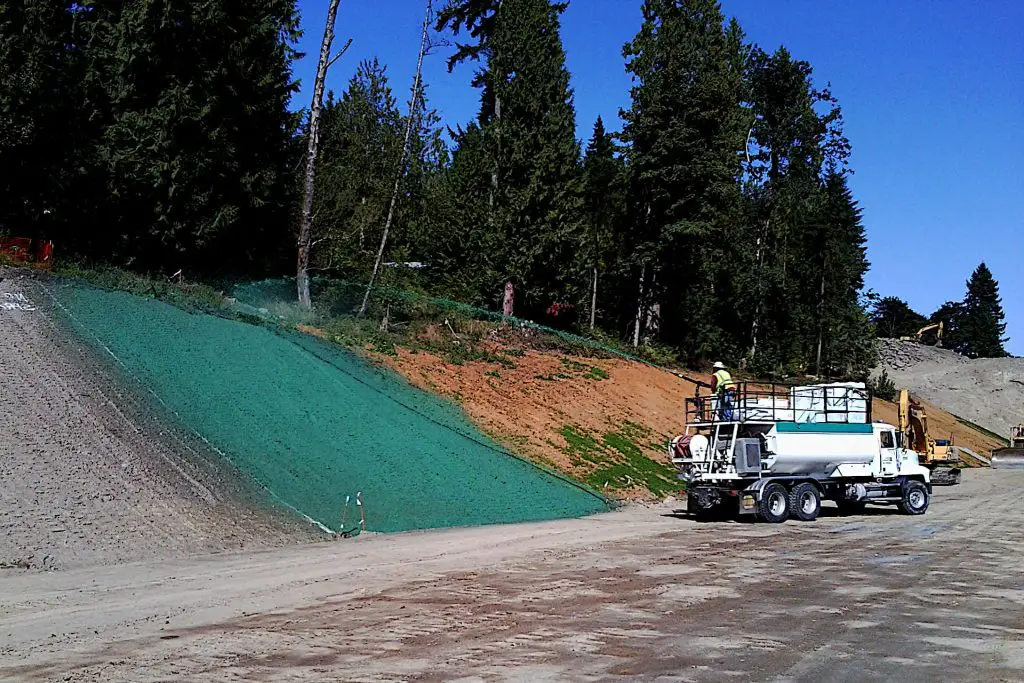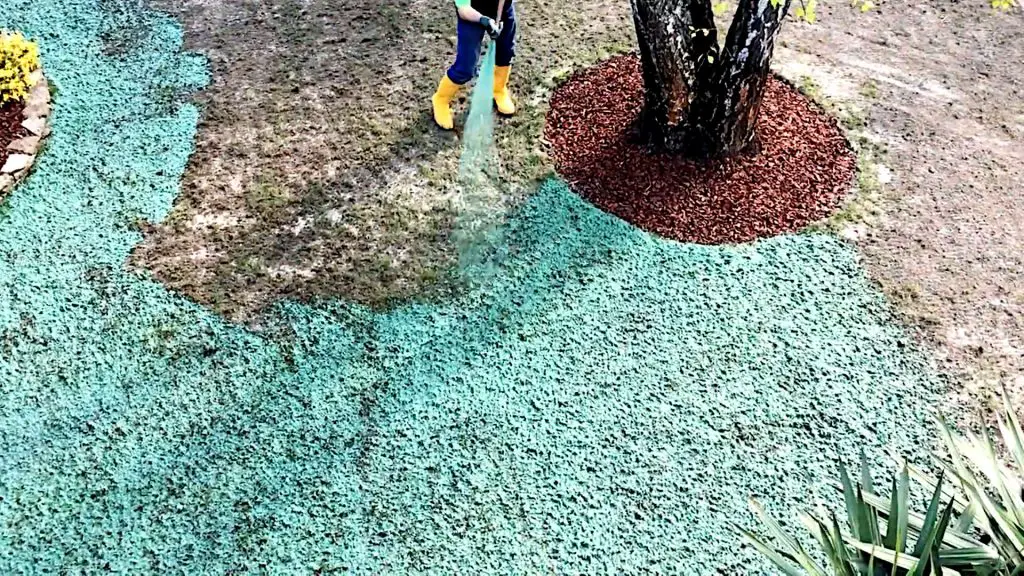How Much Mulch Do You Need for Hydroseeding? | What Thickness of Mulch Is Used?
The quantity of mulch that you use in a hydroseeding project and the thickness that is applied is one of those topics that if you ask twenty different contractors you will get a multitude of different answers, few of which will be the same. This is because there are a number of different variables that need to be taken into consideration so it is impossible to provide a definitive answer.
There are, however, some baselines that you can use when determining the thickness of the mulch to put down In general, the thickness often comes down to what is most effective for the climate and humidity, soils, and seed that is being applied.
We will look at these variables below and see how they impact your decision on how much mulch you need for a specific hydroseeding project.
Mulch Application Rate per Acre
In terms of the thickness of mulch laid, it is usually expressed in terms of pounds per acre. There is of course no definitive rate because what is right for New England will be totally different for more arid conditions, this is before we even consider use case scenarios and other variables.
Ordinarily, the application rate will be expressed in pounds (lbs) per acre. So you will see figures such as 1,500 lbs per acre quoted. The hydroseeder will themselves vary in size of the tank and manufacturers will quote coverage per load. This is problematic because application rates can vary from job to job, area to area.
A manufacturer may, for example, say that you can cover 4000 sq ft per load, which is just under a tenth of an acre. However, this of course will be dependent on the thickness of the slurry that you are going to lay. So, if you want to put down 1,500 lbs per acre that is just over 150 lbs per load but if you want to put down 3000 lbs per acre then each load is only going to cover around 2000 sq ft.
Below you will find a useful mulch application calculator that will give a good idea of the amount of mulch you require and the number of loads.

The Type of Mulch that You Use
The next important variable is the type of mulch that you are going to use. For example, wood and paper mulches are likely to require different application rates.
Whilst paper mulch is usually the least expensive option you can find that it will crust over if laid down too thickly. If this happens you will find that grass will be suffocated below the crust being unable to force its way through, thus stalling the germination process and leading to failure.
Wood mulch on the other hand can be laid much more thickly as it doesn’t have the same tendency to solidify allowing grass to more easily thrive.
Prevailing Climatic Conditions
One of the most important variants in the decision as to the amount of mulch to use is that of climate. The difference between the amount of mulch you would use in a temperate climate as opposed to arid conditions is substantial.
Understanding prevailing conditions is important to achieving a successfully finished grass area. In arid conditions, moisture is eaten up rapidly by the heat. You will often find that you can lay down twice the amount of mulch in these conditions than in a more temperate climate.
If you are used to using between 1200 -1500 lbs per acre in temperate conditions you could easily find yourself using 3000 lbs per acre in a hot arid climate.
How Soil Conditions Can Effect the Quantity of Mulch Used
In the same way that climate affects the quantity of mulch used so do soil conditions. Although usually, these tend to follow climatic conditions powdery or ground that is both hard and moist.
With powdery dry soils, the moisture in the mulch can be absorbed very quickly meaning that you need to ensure you put down enough material to counter this.
With regard to the ground that is hard but a little moist, there is a real temptation to think that you have put down enough slurry only to realize that you probably haven’t covered the area well enough., which will almost certainly be the case if you find that you are laying not much more than 1000 lbs per acre or bare ground.
In these situations, experience will help a lot and the more you hydroseed the better a judge you will become of what is the correct amount of mulch required.
The Purpose of the Hydroseeding Effects Thickness of Mulch
The purpose of the project can be very important in determining the thickness of the mulch to lay day. Hydroseeding a new grass area, hydroseeding over an existing lawn, and erosion control will all require different thicknesses of mulch.
Mulch Usage when Laying a New Lawn
If you are laying a new lawn or grass area then your considerations are likely to be based on soil, seed, and prevailing climate conditions. As we have noted, the more arid the conditions the more mulch you are going to use for a project.
This, of course, will still be true for both overseeding and erosion control but additional considerations have to be taken into account.
Mulch Usage when Hydroseeding Over an Existing Lawn

In terms of using hydroseeding for overseeding usually, a thinner layer of mulch will be put down. As a rule of thumb, you are probably going to reduce the quantity of mulch you use by around a quarter to a third. Again soil and climatic conditions are going to play a role in the actual reduction.
The reason for this is that the existing grass will need to be able to thrive. The objective of the hydroseeding in this scenario is to fill in a revive the lawn. If you lay too thick a blanket then the original grass might struggle to break through the mulch.
Mulch Usage when Dealing with Erosion Control
Of the use cases that are most likely to require thicker mulch is that of erosion control. One of hydroseeding’s key benefits is the process’s ability to deal with soil erosion and difficult terrains.
The various tackifiers and binding fibers that you can add to the hydroseed mix mean that it can target specific erosion problems. Erosion can be a particular problem with slopes, although slopes free of erosion also fall into the category of requiring thicker mulches.
The steeper the slope the more mulch is likely to have to be used in order to keep the seed in place. With soil prone to erosion, the soil is more likely it is to absorb moisture thus requiring a thicker slurry blanket. steepness of projects
Hose Diameter Can Effect the Mulch Thickness
One variable that is not always considered is the hose size that you are using. The side of the hose will affect the application rate of the slurry you are laying down
The larger the diameter of the hose the higher the volume of material that will be sprayed making it far easier to lay down a thicker mulch. The bigger the hose though the more difficult it is to control and may need more than one person to handle.
You are likely to find that in specific circumstances, particularly when it comes to erosion control an increased application rate will be required as a thicker mulch is likely to be needed.
Trial and Experiment as To What Works Best
In reality, as every area varies you are likely to find that trial and error are the most effective way to determine the likely type and amount of mulch each project will need.
Different types of use cases will require different trials. Commercial and erosion control will need to be upscaled in terms of the amount and type of mulch that you use.
However, as most contractors will operate within a given area you should be able to find some consistency dependent on the purpose.
Mulch Application Rate Calculator
Once you have determined what works best for your local conditions being able to quickly calculate the amount of mulch required job will be useful. Below you will find a handy calculator that will help do just this.
Final Thoughts: How Much Mulch Do You Need for Hydroseeding?
It is clear that there is no ‘one size fits all’ policy that can be employed in determining the amount of mulch that you will need to use. Climate and soil condition are probably going to be the two biggest factors but the use case also has a major bearing. Temperate climates as opposed to arid climates are generally going to require much less mulch.
Trial and experimentation are likely to be the key forming systems that work for you. The more experience you gain will help you decide what is necessary for each use case and each project.
